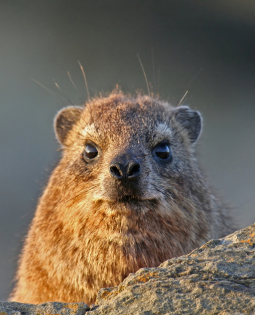When thinking of mammals and South Africa, one might be forgiven for first thinking of rhinos, lions and elephants. While these can be seen in South Africa, they tend to be in wilder and more remote regions such as the famous Kruger National Park in the country’s far northeast. In the Cape region in the country’s far west, however – perhaps in part due to human settlement, but also due to the special climate and the habitats it creates – we don’t tend to see big game very much; even as the area was first being explored by Europeans, it was reported that there was none. Nonetheless, we do have a chance to see some different and just as fascinating mammals. Most of them will likely be grazing mammals including a number of antelope species, but here I will show a variety of creatures that I always enjoy seeing:
1. Bontebok
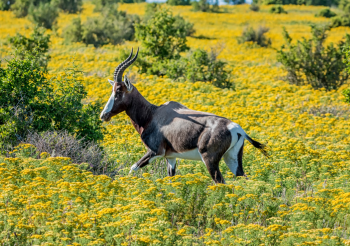
The Bontebok is a beautiful and vulnerable antelope species, one of the species occurring naturally in specific parts of the Cape. At one point, the entire population was reduced to just 17 individuals, but through conservation, now numbers more than 2,000. We should look for them in the veldt grasslands as we explore the Western Cape.
2. Rock Hyrax
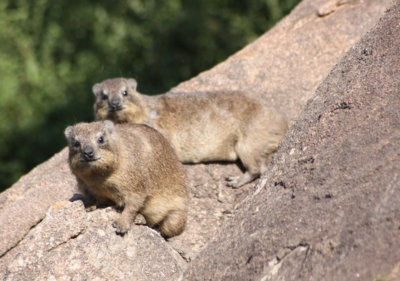
(Photo credit: Derekkeats)
For an interesting smaller mammal look no further than the hyrax. It resembles a groundhog in size and shape but unbelievably, is most closely related to elephants! The only sign of that relationship are the rather elongated tusks seen most prominently on males. Most often they are seen lounging on rock surfaces, sometimes in heaps of individuals. Rocky areas are their preferred habitat, so they can escape predators by scampering into crevices, but I have seen a little pod of them high up in bushes, feeding on leaves. Interestingly, they can eat poisonous plants that other mammals would not touch, possibly due to their hardy three-chambered stomach. Perhaps one of the reasons they lounge on the rocks and soak up the sunshine is because they regulate their body temperatures only poorly, so they heat themselves in the sun to warm up adequately.
3. Eland
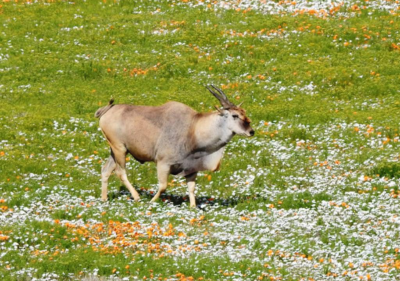
(Photo credit: Pete Read)
Sporting spiral horns, the Eland is a very large antelope of savannah and plains, with males weighing upwards of one ton! Despite its size and heavy physique, it is an agile animal, and even large bulls can jump over fences. Not only do they resemble cattle, but in some areas of Africa they are domesticated and used as with cattle. This one was roaming free in the West Coast National Park in the Cape, nibbling on the grasses and wildflowers as it wandered.
4. Cape Fur Seal
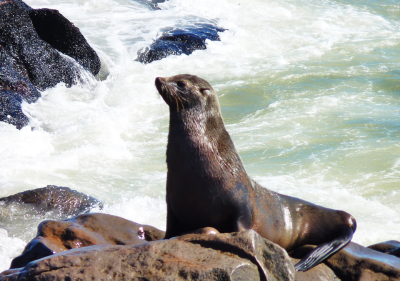
(Photo credit: David Siu)
This is the largest of the fur seals. As a member of that group, and like their kin the sea lions, they can walk on their flippers and have external ear flaps, among other identifying traits. This species is found exclusively along the south-west and Cape coastal areas of Africa, where it feeds on the abundant fish, squid and crustaceans in the productive ocean upwellings. Cape Fur Seals are vulnerable to overfishing of sardine, a mainstay of the species, as well as depletion of food resources by environmental changes. They are widespread though, and we always enjoy watching them interacting or simply basking in the sun at a few spots as we travel along coastal areas.
5. Springbok
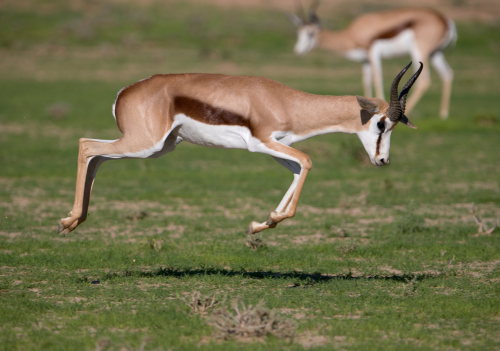
The Springbok is quite common and we will hopefully see small herds wandering the grasslands. We hope to see them “pronking” where they rather comically bound stiff-legged with curved back and downward head, bouncing several times before continuing to walk. It is not known why they do it, but ideas range from simply showing off to trying to show predators they are fast and agile animals. This pretty species was once featured on South Africa’s coat-of-arms.
Bonus: Gemsbok
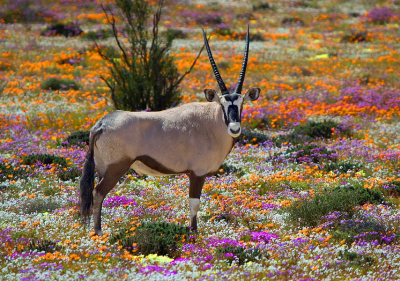
Gemsbok or South African Oryx, is one of the larger species of antelope featuring beautiful color pattern and unique horns. The name gemsbok is from Afrikaans, combining the Dutch name for the mammal chamois, becoming “gem”, and male goat “bok”. Although they have some superficial similarities in appearance the chamois and the true oryx are not closely related. We should see these in the more arid Northern Cape region, where they can live without ever drinking water, deriving what the moisture they require from the plants that they eat. Unbelievably, there is an established population in New Mexico, USA, introduced in the early 1970s!
The above are just some of the fascinating mammals we may see next August on our Best of the Cape tour. Click here to learn more about this tour.


